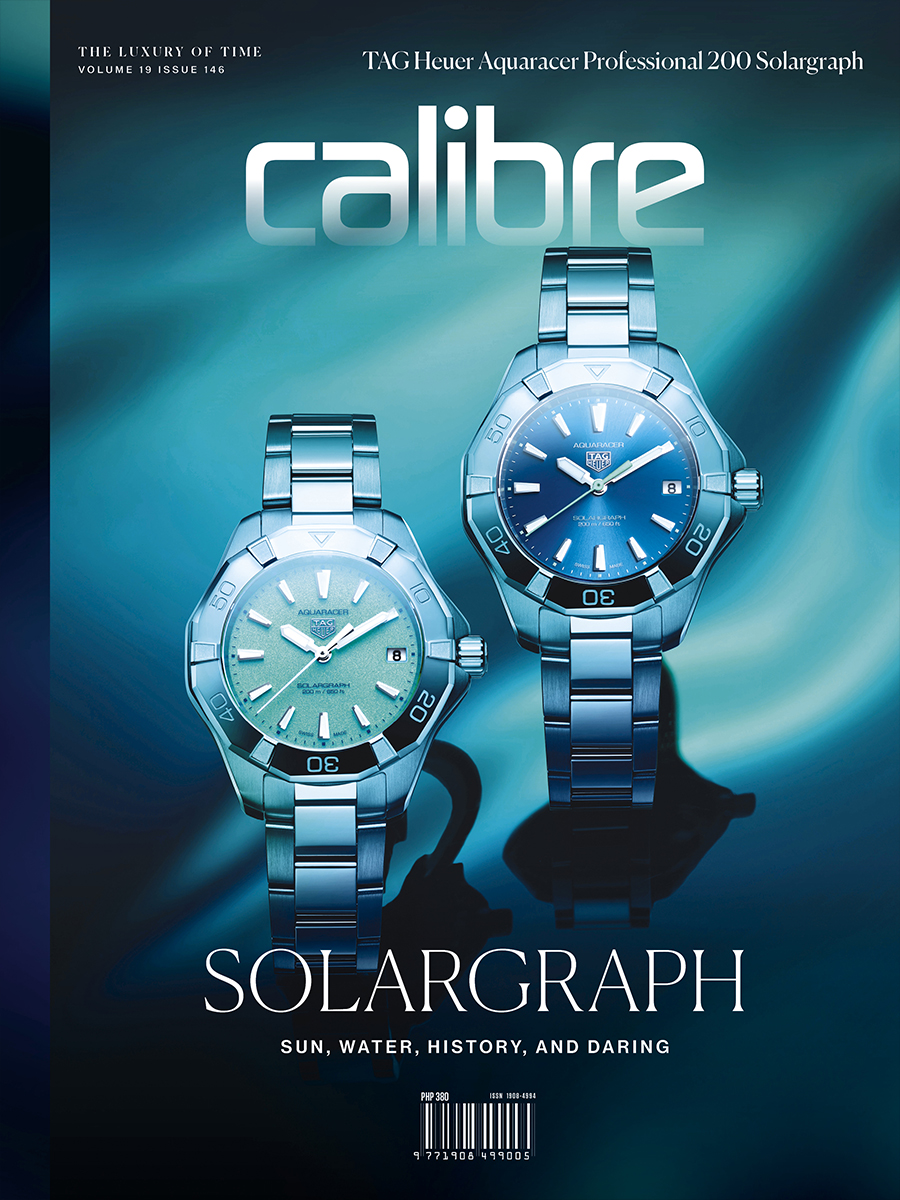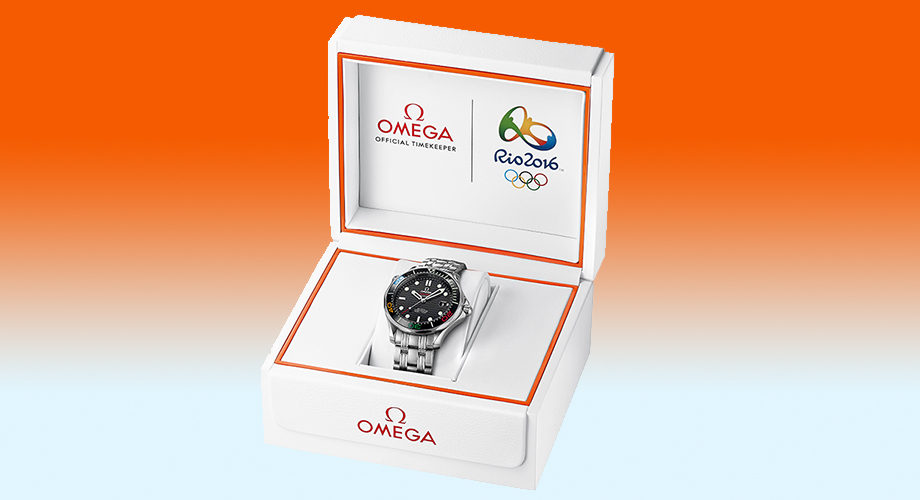For Omega, the participation in the Rio de Janeiro 2016 Summer Olympics is part of a longstanding and established ritual. It’s a tradition that lasts decades, but is invested in fractions of a second. The name Omega will be forever. (It even says so in the Bible.) An Olympic event itself may last mere moments. Somewhere in between, is the pageant, spectacle, tragedy and triumph that will be known as the Rio de Janeiro Olympic Games.
To commemorate that span of time, Omega has prepared the Seamaster Diver 300m “Rio 2016” Limited Edition wristwatch. (Strangely, it’s a limited edition of THREE thousand and sixteen pieces. 3016, not 2016. Maybe they’re thinking ahead.) The Seamaster Diver “Rio 2016” is a stainless steel case dive watch that is good for water resistance up to 300 meters, which is more than adequate for any Olympic sport, unless they’ve recently added “Marianas Trench Diving.” As with all dive watches, it has features specific to the joys of being underwater for extended lengths of time. Chief among these is the unidirectional bezel, which rotates to allow you to track time but does not spin in the wrong direction, lest you overstay your welcome and become an unfortunate casualty of the deep. The hands of the watch are polished, faceted skeleton hands plated in rhodium. They are coated in white SuperLumiNova™ for maximum readability. There is also a helium release valve at 10 o’clock, and a date window at 3 o’clock.
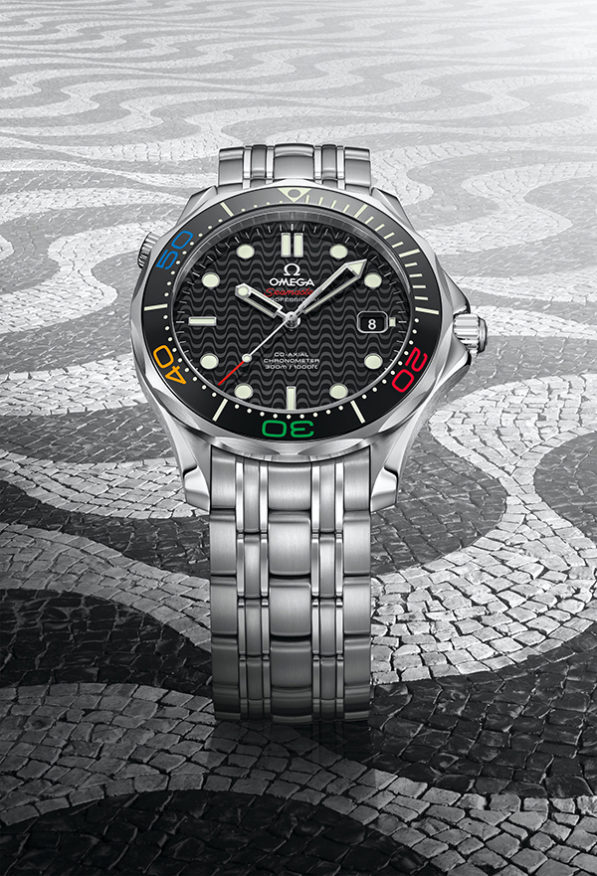
To celebrate the vivid exuberance of Rio de Janeiro, the Seamaster Diver Limited Edition sports a lacquered black dial that bears a special wave pattern. This pattern was inspired by a mosaic design on the sidewalks of the Copacabana.
The party continues on the other side, as the stainless steel case back shows the “Rio 2016” logo, and also bears the limited Edition number of each individual watch.
Another special Rio touch is the lacquered numbers on the bezel, done up in red, yellow, green and blue. These colors are of course a memory of the colors of the Olympic rings, but they also serve to illustrate the dynamic life of Rio de Janeiro itself.
The 2016 Rio de Janeiro Olympic Games
August 5 will see the beginning of the Summer Olympic Games at Rio de Janeiro. And once again, Omega will serve as the Games’ official timer. This marks yet another moment in time where Omega has helped to tell the tales of the greatest athletes in the world.
Since 1932, Omega has been the official Olympic timer 26 times. Rio de Janeiro will be the 27th. And in that time, ironically, timekeeping has changed a lot. We think of timekeeping as big red displays and stopwatches, but technology has kept moving. To the 1932 games, Omega sent one guy and 30 chronograph chronometers. This year, by contrast, Omega will be sending 480 TONS of timekeeping equipment to the games, along with 450 timekeeper personnel. These will include devices that can accurately measure time increments so small that they make the blink of an eye seem long. Things now are sure different from what they used to be.
To look at the Omega participation in the Olympic Games throughout the years is to look at a part of history. The games we know now are an age apart from the original Greek games, of course. But even in the time since Omega began participating, there has been a great deal of change.
Back in 1932, when Omega was chosen to be the Olympic timekeeper, that very selection was already a benchmark. It was the first time that a single, private company had been entrusted with the honor and responsibility of keeping time for all the different Olympic events. ( And they had one man doing it all. Seriously. You gotta love that image. “Who are you?” “ I am the Olympics Timekeeping Body.”)
And to give them credit, Omega in 1932 was no slouch. That one guy was able to measure results within a tenth of a second. The Omega expertise was much appreciated by the officials, and it proved key to confirming no less than 17 new world records. As a further fun fact, the 1932 Los Angeles Olympics also saw the first-ever Olympic Village… as well as the first medal podiums at an Olympic Games.
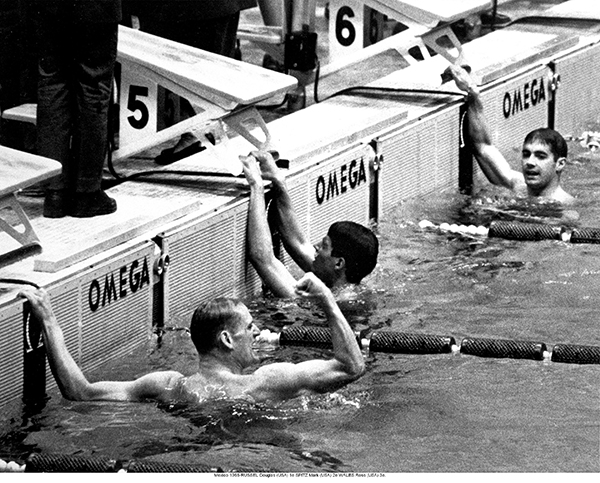
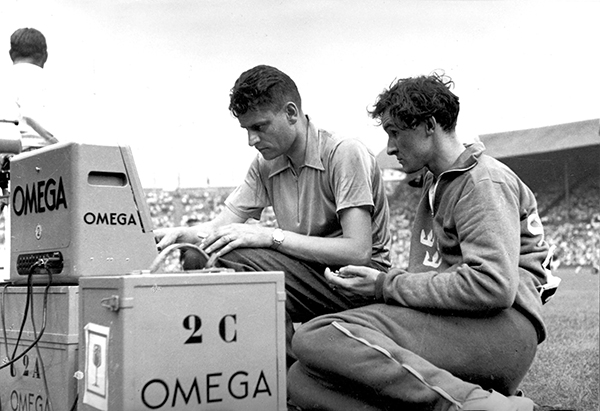
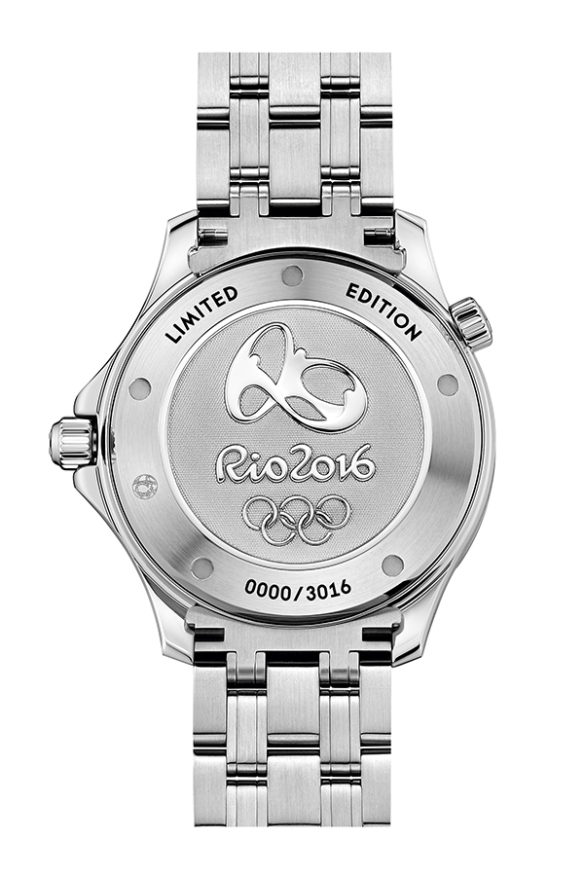
As the years went on, technology progressed. The year 1948 saw the London Olympics introduce an unheard-of contraption – Omega’s “Magic Eye” known to us today as the photo-finish camera. Suddenly there was real photographic evidence of exactly where everybody was when the finish line was crossed. Developed by the British Race Finish Recording Company, the device marked the moment when the human eye was surpassed as a measure of winning and losing. That year, the technology was immediately put to the test, as two finishers in the 100 meter final clocked the exact same time of 10.3 seconds. The camera spoke, the gold was awarded, and photographic evidence became a part of the Olympic winners’ lexicon.
In 1960 a controversial decision regarding a 100 meter freestyle swimming event led to Omega taking a hand in developing another way to resolve it. Up until 1960 events were still judged by human-eye decisions, but in the 100 meter freestyle the judges could not agree on who had won. The question was avidly discussed even after the gold was awarded, and by ‘avidly discussed’ I mean I bet there were a few fistfights that might have almost broken out. So Omega developed the touchpads for the pool lanes, which meant a swimmer would be stopping his or her own time on their own. Now, the touchpads are standard equipment at Olympic pool events.
In Mexico City in 1968, Omega introduced the Photosprint. This device captured in one photograph the image of every single runner as they crossed the finish line. This meant that one minute after the race ended, the judges had a clear picture of the finish times of every contestant. Ironically, that year also saw several world records being broken, and they captured it on film. But this didn’t necessarily reflect any inaccuracies in previous timing: experts believed that the thin air of the high-altitude Mexico City contributed to these excellent performances.
The technology just kept improving… and growing. By the time of the Mexico City Olympics in 1968, the Omega Olympic detachment was already up to 45 timekeepers, and 8 tons of equipment. The mass had not yet hit today’s levels, but the move had begun.
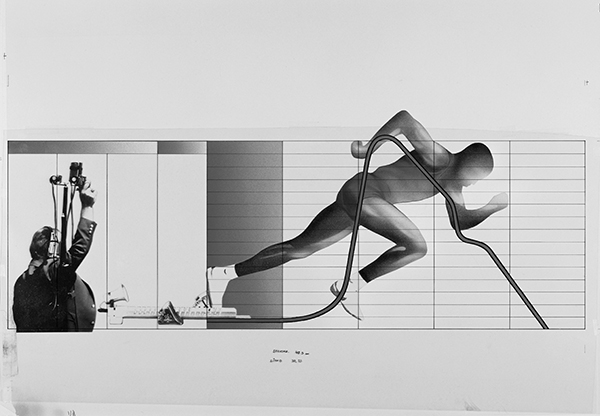
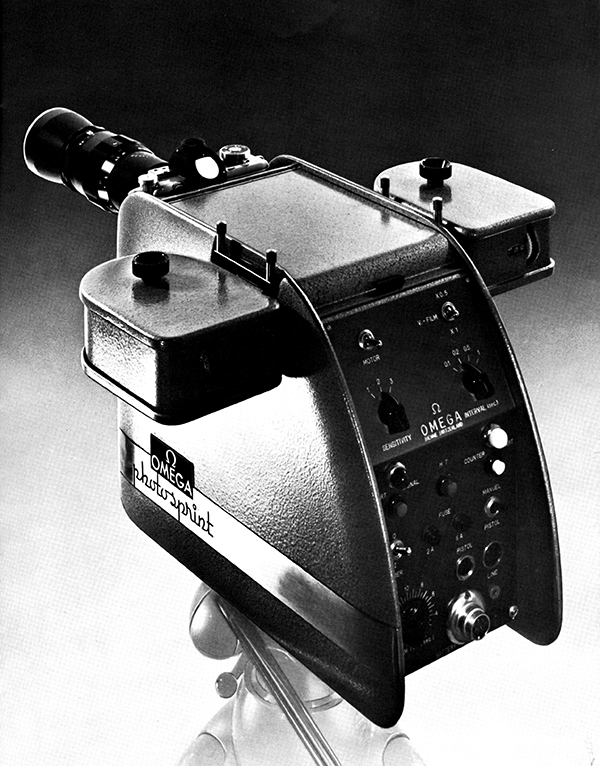
To look at the Omega participation in the Olympic Games throughout the years is to look at a part of history. The games we know now are an age apart from the original Greek games, of course. But even in the time since Omega began participating, there has been a great deal of change.
Today, the Omega equipment used at the Olympic Games is as advanced as it’s ever been. Rio de Janeiro will see interactive starting blocks used by sprinters and short-distance runners; these can be used to detect a false start, meaning a motion off the starting block that happens before the race has officially begun. (And yes, we’re talking about fractions of a second here.) There is the innovative Swimming Show that instantly ranks the top three finishers in the pool first used in London in 2012. There will also be the high-precision Quantum Timer used in athletics and water sports. It has an enhanced resolution of one millionth of a second.
And there are even more devices now being used. There are such inventions as as the laser and sound “starting pistol” with its bright red colour; the OMEGA Scan’O’Vision MYRIA, that captures 10,000 frames per second in a photofinish. As Rio de Janeiro’s opening date comes ever closer, these technological marvels are about to come into the public eye, and like the athletes themselves, will blaze for a moment brighter than the sun.

